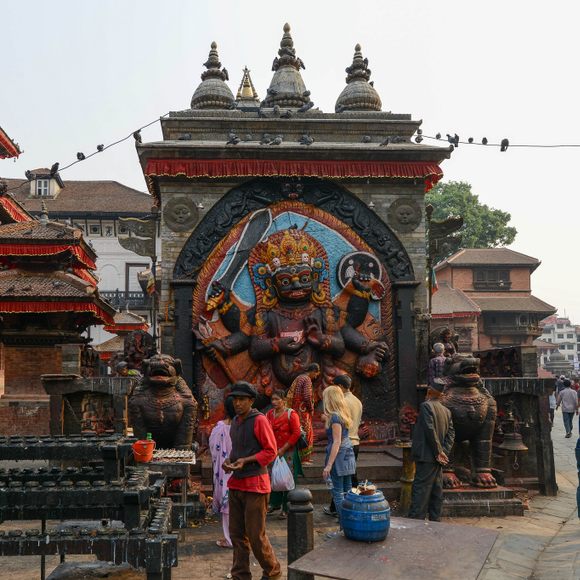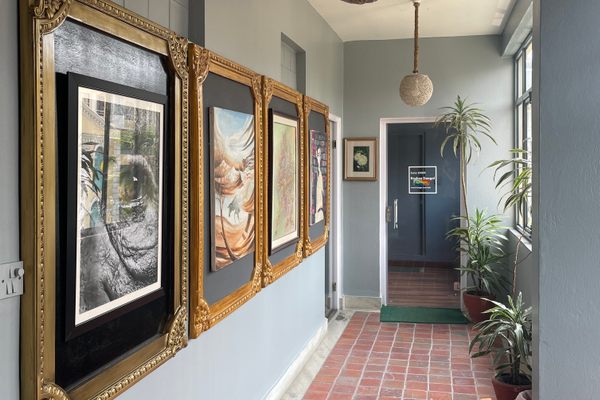Kathmandu Durbar Square
This historic square in Nepal is home to temples dating back to the third century.
Kathmandu Durbar Square, a UNESCO World Heritage Site, is one of three squares within Kathmandu Valley in Nepal. Durbar Square (durbar translates to “palace” or “a court held by a prince”) is an important site for Buddhist and Hindu rituals, holy ceremonies, royal events, and kingly coronations.
Surrounded by fountains, ancient statues, small ponds, and a series of courtyards such as Mohan Chok and Sundari Chok, Kathmandu Durbar Square is a meditative, religious site for spiritual seekers. Within the inner complex of Durbar Square is the site of the Old Royal Palaces (referred to as the Hanuman Dhoka Palace Complex). The Royal Palaces used to house the kings of the Shah and Malla Dynasty, who ruled over the city until the 19th-century. The palaces have since been turned into museums.
The outer complex consists of numerous pagoda-style temples featuring the meticulously carved facades crafted by Newar artists, some of which date back to the 16th-century. Under the direction of the Malla Kings, Durbar Square underwent a series of changes and new architectural additions. King Mahendra Malla (1560–1574) commissioned the construction of the oldest temples in Durbar Square. Built in the Newari architectural style, his contributions included the Jagannath Temple, Kotilingeshwara Mahadev (a stone temple of Lord Shiva), the Mahendreswara Temple, and the magnificent Taleju Temple (the largest and perhaps most important temple of them all). Although these date back to the 16th-century, it’s believed that construction for the square itself and the palaces began as early as the 3rd-century.
Later, King Pratap Malla added more additions to the square, including shrines and new temples, and also restored many of the older temples. When he passed away in 1674, new constructions stopped, but picked up again during the Shah Dynasty. One of the most unusual sites built during the Shah Dynasty is the nine-storied structure called the Nautale, commonly referred to as Basantapur Durbar. Located at the east side of the palace, the structure has four roofs and was rumored to be a “pleasure house.” Other popular temples in the square include Mahadev Temple, Shiva Parvati Temple, Maru Ganesh, Bhagwati Temple, Saraswati temple, octagonal Krishna Temple, Jagannath Temple, and the Kal Bhairav (which represents the destructor form of Lord Shiva). The most interesting story behind the Jagannath Temple is an erotic carving “Kama Sutra” that carved in the bottom of struts. It is believed that lightning will not attacked when we have an erotic carving in the premises.
Perhaps the most peculiar (and revered) sites at the southern edge of Kathmandu Durbar Square is the three-storied temple called Kumari Bahal. This Newari temple, built by the last Malla king Jayaprakash Malla, houses the Kumari Devi–a young girl chosen through a highly selective process and believed to be the living embodiment of the Hindu mother goddess. The Kumari Devi is paraded around the square in a custom-made gilded chariot during the festival of Indra Jatra and others, and worshipped by the people, who carefully watch her for specific signs that may allude to their fortune and fate.
After a devastating earthquake-plagued the area in 2015, many of the ancient temples and historic pagoda-style structures were severely damaged. Kathmandu Durbar Square was designated a Unesco World Heritage Site in 1979, and continues to undergo considerable post-earthquake renovations and reconstruction efforts.
Know Before You Go
Foreign nationals can enter Kathmandu Durbar Square for NPR. 1000.





















Follow us on Twitter to get the latest on the world's hidden wonders.
Like us on Facebook to get the latest on the world's hidden wonders.
Follow us on Twitter Like us on Facebook